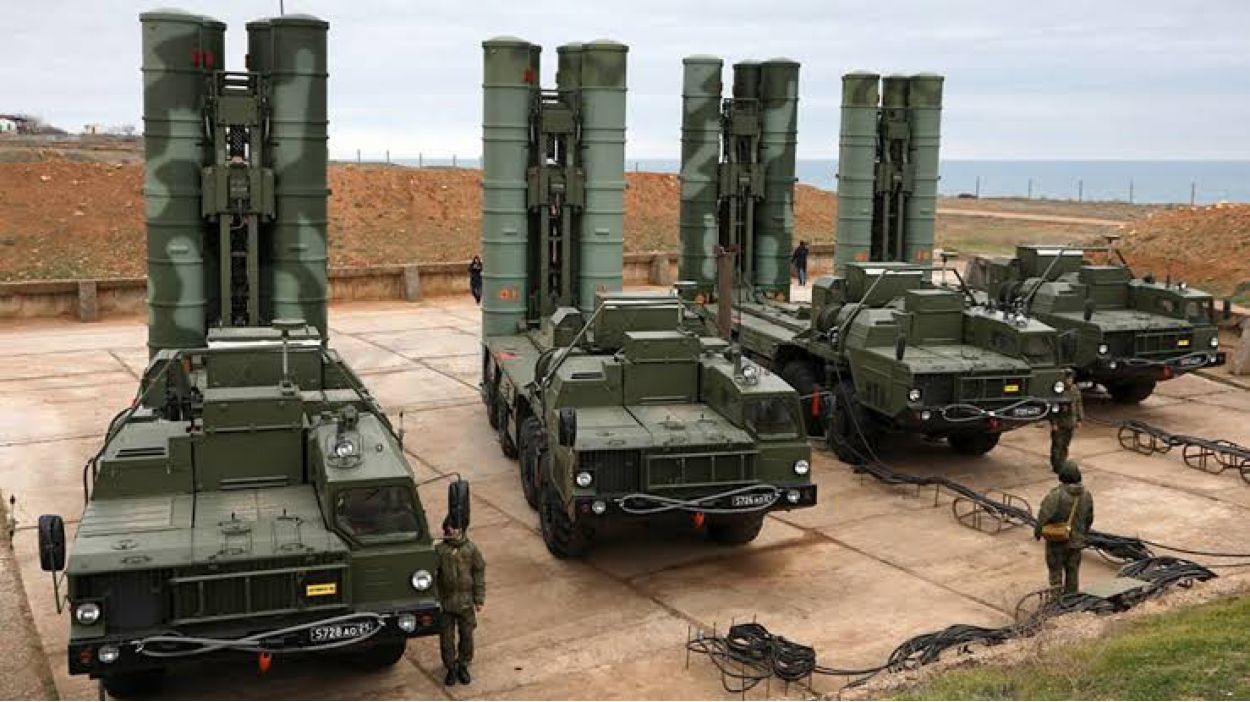Turkey ‘Excludes’ Russian S-400 AD Missile System From Its Ambitious ‘Steel Dome’ Air Defense Program

Turkey (Türkiye) has announced plans for a cutting-edge, domestically developed multi-layered air defense system, dubbed the ‘Steel Dome.’
As reported by Daily Sabah, an Istanbul-based newspaper, this AI-enhanced, network-centric shield aims to provide comprehensive protection for Turkish airspace.
In a surprising twist, the $2.5 billion Russian S-400 missile system, a source of significant international tension, has been excluded from this new initiative. This decision highlights the complex geopolitical tightrope Türkiye walks between its NATO allies and Russia.
Türkiye’s ‘Steel Dome’ Project
Türkiye has greenlit the ambitious ‘Steel Dome’ project, a state-of-the-art multi-layered air defense system. Approved by President Recep Tayyip Erdogan on August 6, this initiative marks a significant leap in the country’s defense capabilities.
AfriPrime App link: FREE to download...
https://www.amazon.com/Africircle-AfriPrime/dp/B0D2M3F2JT
The ‘Steel Dome’ is not just a single system but a ‘system of systems’, integrating various indigenous technologies developed by Turkish defense giants like Aselsan, Roketsan, and MKE. It combines sensors, communication modules, command and control stations, and AI-powered decision-making tools to create a comprehensive shield against aerial threats.
This robust defense network is structured in four layers:
-
Very Short Range (up to 10 km): Featuring systems like Korkut, Gökberk, and Sungur.
-
Short Range (5-10 km): Incorporating Herikks, Hisar A+, and Gökdemir.
-
Medium Range (10-15 km): Utilizing Kalkan 1, Kalkan 2, and Hisar O+.
-
Long Range (15-30+ km): Employing the Siper system, with a planned range of 100 km.
Key contributions from Roketsan include the Alka-directed-energy weapon for drone defense, the Burç mobile air defense system, and the Sungur short-range missile system.
TÜBİTAK SAGE (Defense Industries Research and Development Institute) will spearhead research and development, while MKE (Mechanical and Chemical Industry Corporation) will supply advanced weaponry and ammunition.
This collaborative effort underscores Türkiye’s focus on indigenous defense capabilities.
Russian S-400 Missiles In Türkiye
Notably absent from this new initiative is the controversial Russian S-400 missile system.
The S-400 saga began in 2017 when Türkiye, citing refusals from Western allies to sell them necessary defense systems – like the Patriot system, signed a deal with Russia.
In December 2017, Ankara announced an agreement with Russia to purchase two batches of the S-400 missile systems, totaling $2.5 billion. A down payment was made for immediate delivery, with an option for future acquisition and potential collaboration on the S-500 system.

The US, concerned about potential intelligence gathering on NATO operations, retaliated by removing Türkiye from the F-35 fighter jet program in 2021 and imposing sanctions under the Countering America’s Adversaries through Sanctions Act (CAATSA). Despite these apprehensions, the first components of the S-400 system arrived in Türkiye on July 12, 2019, as confirmed by the Ministry of National Defense.
AfriPrime App link: FREE to download...
https://www.amazon.com/Africircle-AfriPrime/dp/B0D2M3F2JT
Furthermore, the US warned Türkiye that activating the S-400 systems or purchasing additional batches would lead to stricter sanctions under CAATSA. On December 14, 2020, the US imposed sanctions on Türkiye’s Presidency of the Defense Industry (Savunma Sanayii Başkanlığı, SSB) and its key officials over the S-400 procurement.
Now, Türkiye’s decision to omit the S-400s from its new ‘Steel Dome’ project may signal a shift in its defense strategy, potentially aimed at mending fences with NATO allies. However, it also raises questions about the future of the costly Russian systems and Türkiye’s defense relationships going forward.
Russian Missiles Remain Inactive In Turkey
In a surprising twist to the saga of Türkiye’s controversial S-400 missile purchase, it has come to light that these advanced Russian weapons systems are not actively deployed. Instead, they lie dormant at an undisclosed location, ready to be awakened should the need arise.
This revelation came from former Türkiye’s defense minister Hulusi Akar. During a parliamentary committee meeting in November 2022, Akar lifted the veil on the status of the S-400s, stating they were “ready to be deployed” if threats emerged and deployment locations were determined.
However, his careful wording suggested no imminent plans for activation. Akar’s disclosure was a calculated move to counter opposition claims that the missiles were merely expensive scrap metal. He assured that the system could be operational within an hour of transport, emphasizing its readiness despite its current dormant state.
This situation has sparked a heated debate among Turkish citizens, particularly on social media platforms. Many are questioning the rationale behind the $2.5 billion purchase if the missiles remain unused.
Periodic reports suggesting the S-400’s integration into Türkiye’s new ‘Steel Dome’ air defense project have surfaced, likely in an attempt to quell public concern. However, recent official statements have made it clear that the Russian system will not be part of this ambitious domestic initiative.
Türkiye appears to be charting a course back towards closer alignment with its NATO partners, prioritizing these strategic relationships over the activation of the Russian missile system.
What’s Next For Türkiye’s Dormant S-400s?
As Türkiye unveils its ‘Steel Dome’ project without the inclusion of the S-400s, speculation intensifies regarding the future of these expensive Russian assets.
The decision to sideline the S-400s in favor of a domestically developed system marks a potential shift in Türkiye’s defense posture and its delicate balancing act between NATO allies and Russia.
Adding intrigue to the situation, former minister Cavit Çağlar has proposed a bold solution: selling the S-400s. Cavit Çağlar, a former minister and businessman, stated that “Türkiye should consider divesting the S-400 system”.
Çağlar mentioned potential buyers for the S-400, including India, and suggested that Russia would likely not oppose this move. He emphasized that resolving the issue through dialogue remains a viable option. Çağlar was speaking to the local media on August 5.
Balancing NATO Ties & National Security
As Türkiye advances with its ambitious ‘Steel Dome’ air defense project, the international community is closely watching to see if this signifies a new chapter in Türkiye’s intricate balancing act between East and West.
The inactive S-400s, a $2.5 billion investment, highlight the complexities of international defense politics and Türkiye’s efforts to reconcile its relationships with NATO allies and Russia.
The coming months may reveal whether these silent sentinels will find a new purpose or a new home or remain a costly footnote in Türkiye’s defense history.
AfriPrime App link: FREE to download...
- Questions and Answers
- Opinion
- Motivational and Inspiring Story
- Technology
- Live and Let live
- Focus
- Geopolitics
- Military-Arms/Equipment
- Sicherheit
- Economy
- Beasts of Nations
- Machine Tools-The “Mother Industry”
- Art
- Causes
- Crafts
- Dance
- Drinks
- Film/Movie
- Fitness
- Food
- Spiele
- Gardening
- Health
- Startseite
- Literature
- Music
- Networking
- Andere
- Party
- Religion
- Shopping
- Sports
- Theater
- Health and Wellness
- News
- Culture

